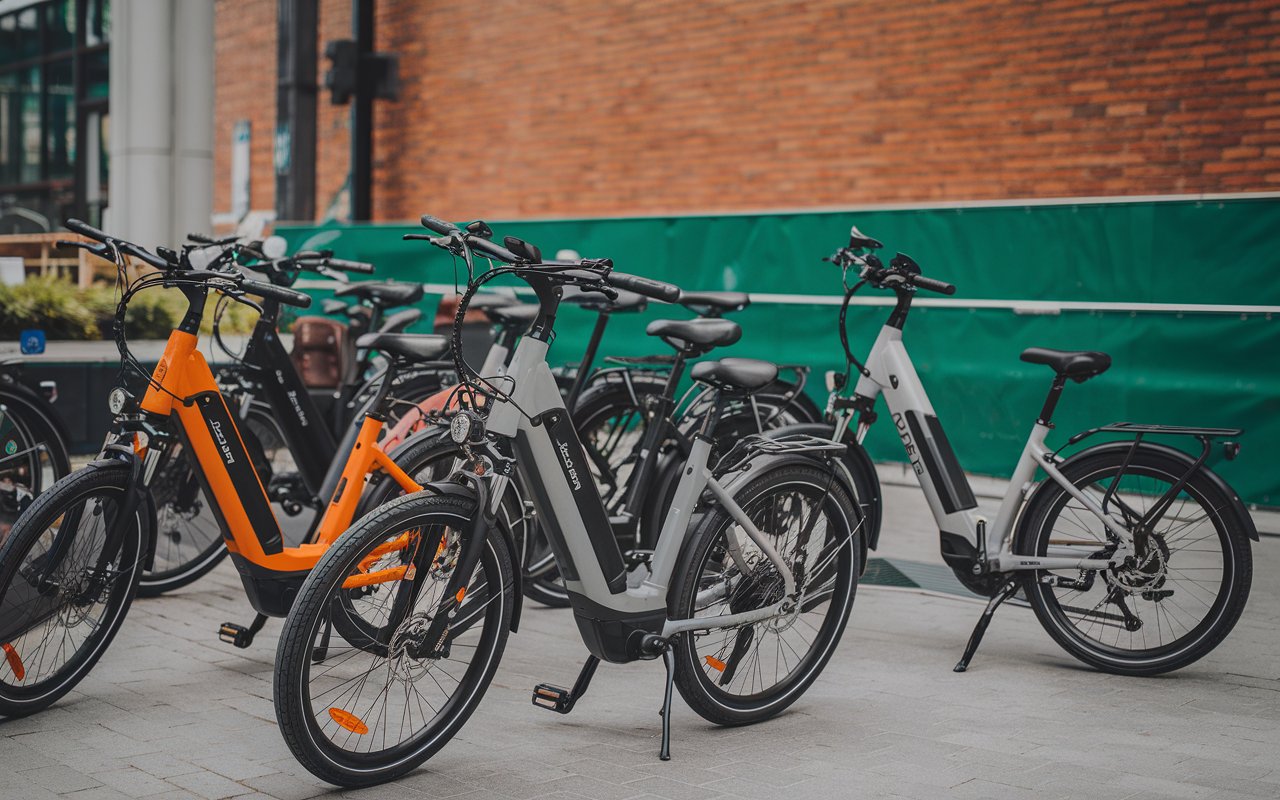Electric bikes, or e-bikes, have surged in popularity, combining the convenience of a traditional bike with the power of a motor. They cater to commuters, fitness enthusiasts, and adventure seekers alike. But with so many options available, how do you choose the right one? This guide compares affordable and high-end e-bikes, helping you decide which one best suits your needs and budget.
1. Why Choose an Electric Bike?
E-bikes offer several benefits:
- Eco-Friendly Transportation: Reduce your carbon footprint.
- Cost-Effective: Save money on fuel and public transport.
- Effortless Riding: Tackle hills and long distances with ease.
- Health Benefits: Combine pedal power with motor assistance.
2. Key Features to Consider in an E-Bike
a. Motor Power
- Ranges from 250W to 750W.
- Higher wattage offers more speed and hill-climbing ability.
b. Battery Range
- Affordable options: 20-40 miles per charge.
- High-end options: 50-100+ miles per charge.
c. Build Quality
- Affordable bikes: Steel or aluminum frames.
- High-end bikes: Lightweight carbon fiber or advanced alloys.
d. Additional Features
- LCD displays, suspension systems, and smart app connectivity.
3. Affordable Electric Bikes
a. Lectric XP Lite
- Price: $799
- Features: 500W motor, foldable design, and 40-mile range.
- Pros: Compact, lightweight, and budget-friendly.
- Cons: Limited advanced features.
b. Ancheer 26″ Electric Mountain Bike
- Price: $650
- Features: 250W motor, 21-speed gear system, and 30-mile range.
- Pros: Affordable entry-level e-bike for city rides.
- Cons: Less power for steep hills.
c. RadMission 1
- Price: $999
- Features: 500W motor, 45-mile range, and sleek design.
- Pros: Durable build and excellent value for city commutes.
- Cons: No suspension for rough terrains.
4. High-End Electric Bikes
a. Specialized Turbo Vado 4.0
- Price: $3,500
- Features: 250W motor, 80-mile range, and smart connectivity.
- Pros: Premium performance, comfort, and durability.
- Cons: Expensive.
b. Trek Allant+ 9.9S
- Price: $6,300
- Features: Bosch Performance Speed motor, 75-mile range, and carbon frame.
- Pros: Exceptional design, power, and smooth ride.
- Cons: Pricey for casual riders.
c. Canyon Grail:ON CF 8 eTap
- Price: $6,999
- Features: 250W motor, 70-mile range, and off-road capabilities.
- Pros: Ideal for adventure enthusiasts.
- Cons: Premium price.
5. Comparison of Affordable vs. High-End Options
| Feature | Affordable Bikes | High-End Bikes |
|---|---|---|
| Price | $600-$1,000 | $3,000-$7,000+ |
| Motor Power | 250W-500W | 250W-750W |
| Battery Range | 20-45 miles | 50-100+ miles |
| Build Quality | Steel or basic aluminum | Advanced alloys or carbon fiber |
| Features | Basic | Advanced (apps, suspension, etc.) |
6. Pros and Cons of Affordable E-Bikes
Pros:
- Cost-effective for beginners.
- Easy to maintain and replace parts.
- Great for short commutes and city rides.
Cons:
- Limited range and power.
- Basic build quality and fewer features.
7. Pros and Cons of High-End E-Bikes
Pros:
- Superior performance and comfort.
- Longer battery life and faster speeds.
- Advanced features for tech-savvy riders.
Cons:
- Expensive initial investment.
- Complex systems require specialized maintenance.
8. Who Should Choose Affordable Options?
- Casual riders or beginners.
- Budget-conscious commuters.
- Those with short travel distances.
9. Who Should Invest in High-End Options?
- Fitness and adventure enthusiasts.
- Riders seeking long-range or off-road capabilities.
- Professionals looking for premium performance.
10. Tips for Choosing the Right E-Bike
- Test Ride: Always try before you buy.
- Assess Your Needs: Match the bike to your lifestyle.
- Research Brands: Look for reliable manufacturers.
Conclusion
Whether you’re dipping your toes into the world of electric bikes or seeking the ultimate riding experience, there’s an e-bike out there for you. Affordable options like the RadMission 1 deliver great value, while high-end models like the Trek Allant+ 9.9S redefine what’s possible. The key is to prioritize your needs and budget to make the best choice for your lifestyle.
Frequently Asked Questions (FAQs)
1. How long does an e-bike battery last?
Typically, 2-5 years, depending on usage and care.
2. Are e-bikes suitable for beginners?
Yes, especially affordable models with simpler controls.
3. Do e-bikes require a license?
Most don’t, but local regulations may vary.
4. Can I ride an e-bike in the rain?
Yes, many are designed to withstand light rain, but avoid submerging the motor or battery.
5. Are there government incentives for e-bike purchases?
Many regions offer rebates or tax credits—check local policies.
